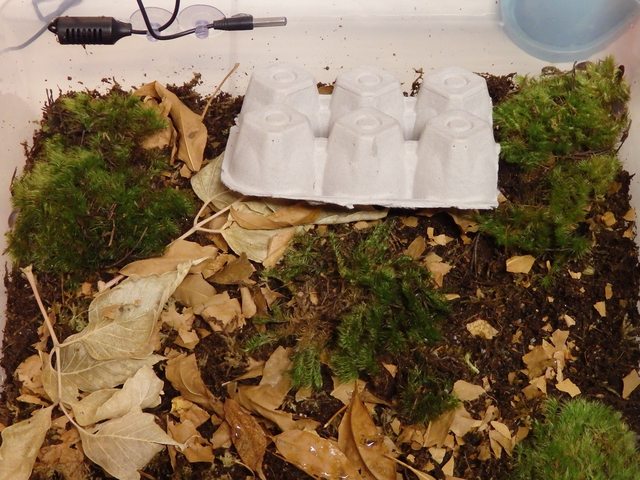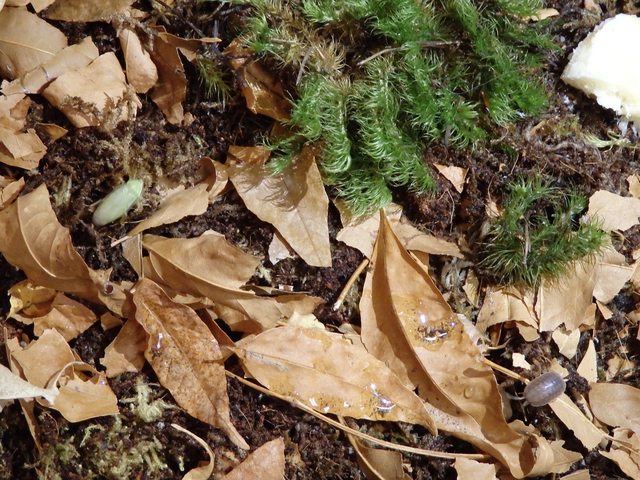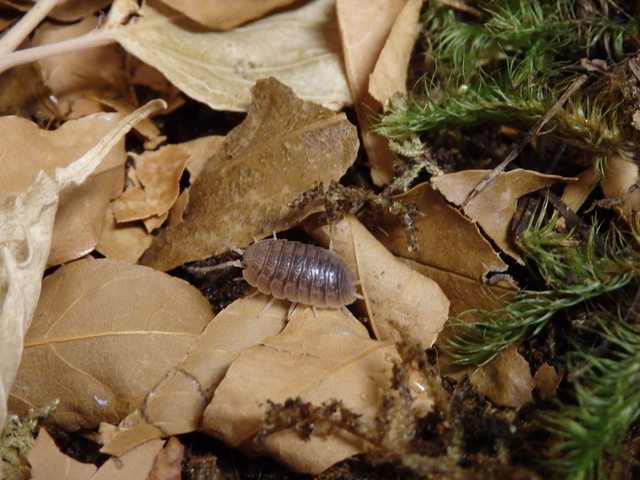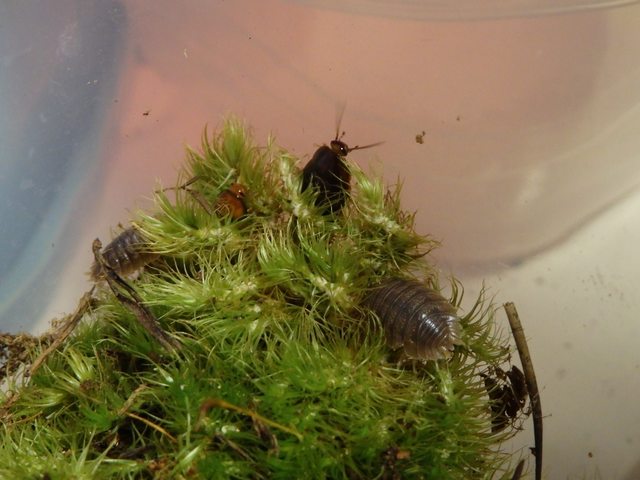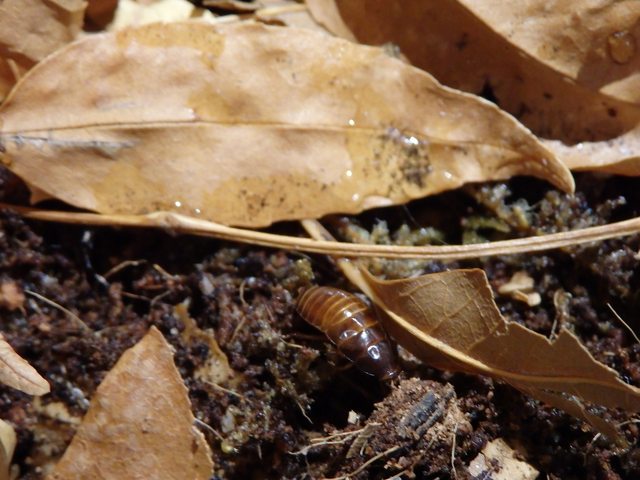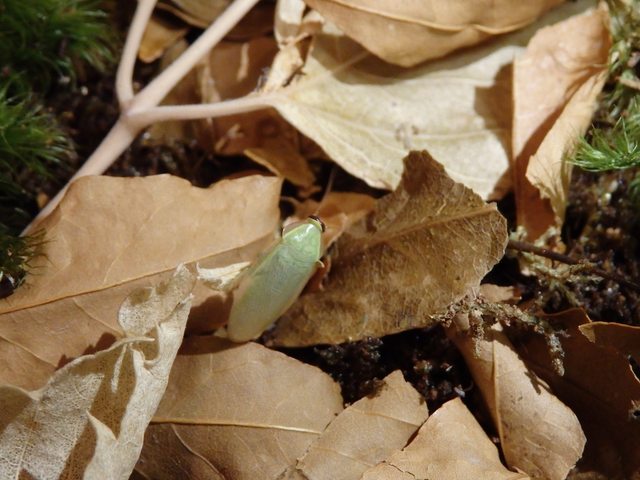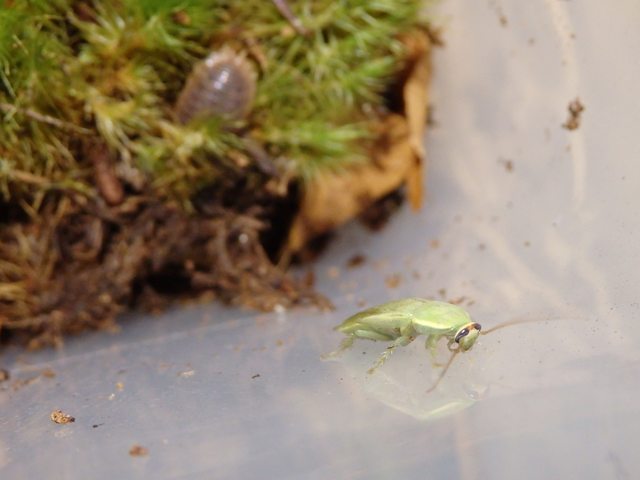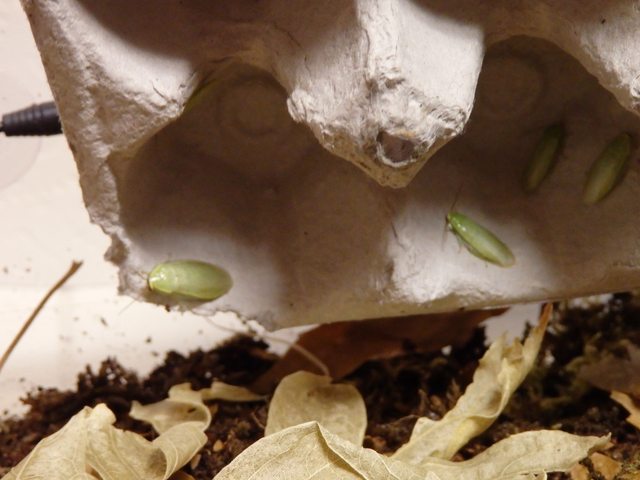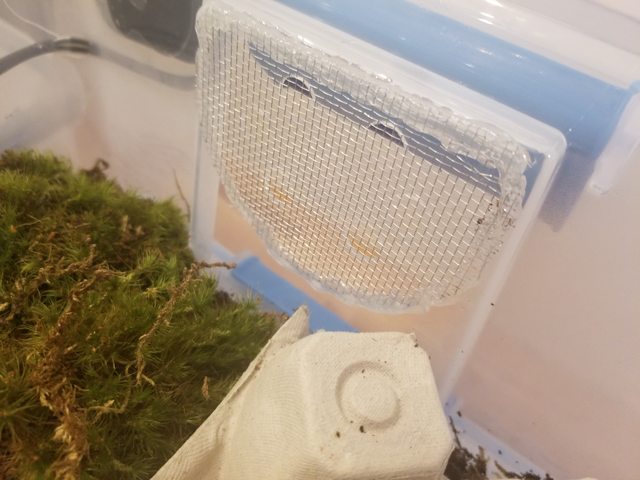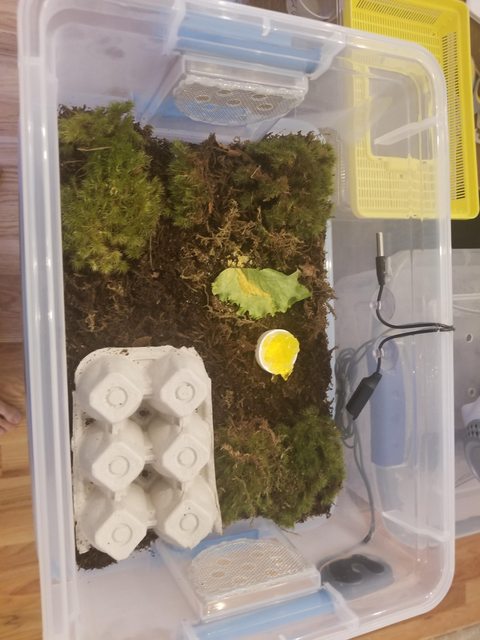We have worked up good enclosures for our mantids, but have found that the feeder insects become more of a chore than anything else. We are trying to simplify how we keep our feeder cultures, our spare isopod cultures, and our plant cuttings.
Here is my thought:
Create a display enclosure that will contain substrate, isopods, green banana roaches, and plant cuttings. It will be housed near our mantids. We are switching from dubias to green banana roaches since they are more interesting and produce nymphs which grow to a good variety of sizes. I also think that their climbing ability will be helpful so that we can allow the mantids to hunt rather than be hand fed like we have to do with the dubias. They require some heat and humidity unlike the dubias. So then I started thinking that it would be nice to keep some isopods in with the roaches to keep things clean. But then how to furnish it? Why not use cuttings from our plants in the other enclosures as they grow too large?
My hope is that this will leave us with an active breeding cleaner culture, feeder culture, and plant culture so that we can keep our mantids happy and healthy. As a bonus, it would be more attractive and even serve as a sort of secondary pet. I have read some people have issues with keeping isopods and roaches together since the isopods will eat up too much frass. We will still supplement food with house and blue bottle flies, but those are no work to keep in the fridge until ready to hatch them.
Thoughts? Suggestions? Is this doomed for failure?
For now we are keeping everything separate. The banana roaches should arrive later this week.
Here is my thought:
Create a display enclosure that will contain substrate, isopods, green banana roaches, and plant cuttings. It will be housed near our mantids. We are switching from dubias to green banana roaches since they are more interesting and produce nymphs which grow to a good variety of sizes. I also think that their climbing ability will be helpful so that we can allow the mantids to hunt rather than be hand fed like we have to do with the dubias. They require some heat and humidity unlike the dubias. So then I started thinking that it would be nice to keep some isopods in with the roaches to keep things clean. But then how to furnish it? Why not use cuttings from our plants in the other enclosures as they grow too large?
My hope is that this will leave us with an active breeding cleaner culture, feeder culture, and plant culture so that we can keep our mantids happy and healthy. As a bonus, it would be more attractive and even serve as a sort of secondary pet. I have read some people have issues with keeping isopods and roaches together since the isopods will eat up too much frass. We will still supplement food with house and blue bottle flies, but those are no work to keep in the fridge until ready to hatch them.
Thoughts? Suggestions? Is this doomed for failure?
For now we are keeping everything separate. The banana roaches should arrive later this week.
Last edited by a moderator:




